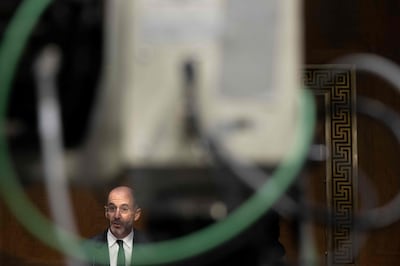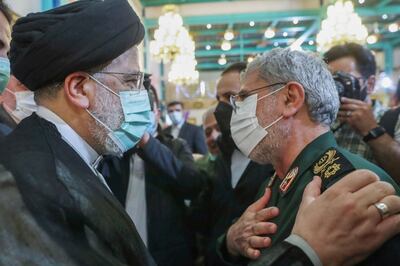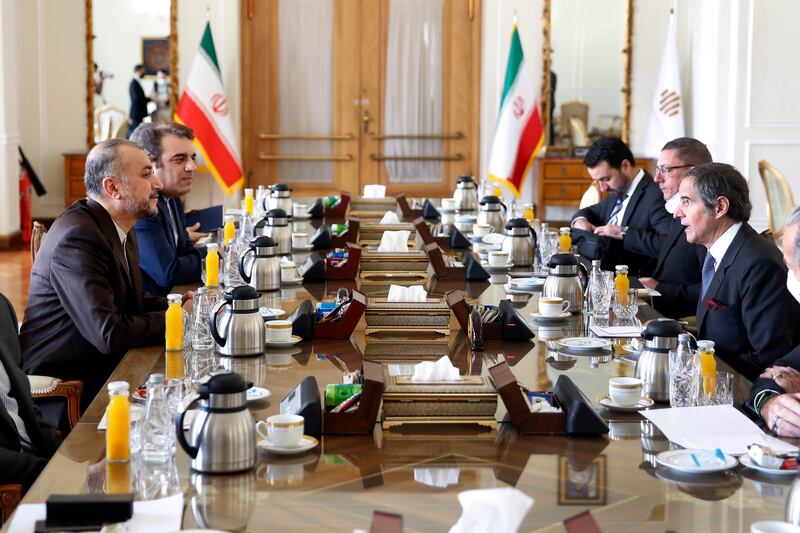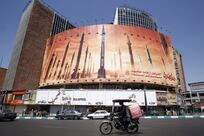For all the enthusiasm the Biden administration has shown for reviving the Iran nuclear deal, the prospects of an agreement being reached between the two sides appear more remote than ever.
It was only a few months ago that European negotiators were excitedly proclaiming that a deal would be signed within a matter of weeks.
The most bullish assessment came from top EU diplomat Josep Borrell, who told a session of the Doha Forum in March that Iran was “very close” to signing an agreement that would curb Tehran’s nuclear programme in exchange for lifting tough sanctions.
"Now we are very close to an agreement and I hope it will be possible," said Mr Borrell, later confiding to reporters that a deal could be accomplished "in a matter of days".
On reflection, this turned out to be the high water mark of the negotiating process. For since then, talks have unravelled at an alarming rate – to the extent that US officials are now openly pessimistic about reviving the 2015 agreement that was originally agreed between the Obama administration and Tehran.
The parlous state of the talks was reflected in comments made to the US Congress this week by Robert Malley, the US special envoy for Iran, who conceded that the odds for failure outweighed those for success.

In his first public testimony to the Senate Foreign Relations Committee, Mr Malley described negotiations to return to the 2015 nuclear deal as “tenuous”. As a consequence, Iran’s breakout time to achieve a nuclear weapons capability is now “as short as a matter of weeks”, he added.
To date, the Biden administration has been involved in eight rounds of indirect talks with Iran in Vienna to resurrect that deal, formally known as Joint Comprehensive Plan of Action (JCPOA), which is designed to cap Tehran’s nuclear activities and prevent it from developing a nuclear weapon.
But in recent weeks, a number of significant obstacles have arisen that have essentially torpedoed the talks.
The first indication that all was not proceeding smoothly came with Iran’s last-minute demand that the US remove the Islamic Revolutionary Guard Corps (IRGC) from its terrorist organisations list. Just at the point when the talks appeared to be nearing fruition in March, Iranian Foreign Minister Hossein Amirabdollahian said that the lifting of US sanctions on the IRGC had become one of Iran’s top demands.
Progress was further disrupted following demands by Russia, one of the original signatories to the 2015 deal, that any revived agreement had to ensure that Moscow was allowed to continue trading with Tehran, and would not be subject to sanctions imposed over the Russian invasion of Ukraine.
Since then, Russia’s involvement in the talks has been further complicated by revelations that Moscow and Tehran are co-operating on efforts to evade sanctions.
Washington has now responded by imposing sanctions on what it describes as a Russian-backed oil smuggling and money laundering network for the IRGC’s Quds Force. Announcing the measures on Wednesday, the US Treasury Department said the network was led by current and former Quds Force figures, and was “backed by senior levels of the Russian Federation government”.

It claimed Chinese companies and a former Afghan diplomat were also involved in the operation, which had raised hundreds of millions of dollars for the Quds Force and Iran's Lebanese allies Hezbollah, as well as helping Tehran to support other proxy militant groups.
But arguably the most challenging obstacle to any successful resolution of the dispute is the deepening fallout between Iran and the International Atomic Energy Agency (IAEA), the UN-sponsored body responsible for monitoring Iran’s nuclear activities, over Tehran’s failure to resolve long-standing concerns over uranium particles found at historic sites.
The IAEA has spent more than a decade pressuring Tehran to explain the presence of these particles, which include weapons-grade material, that have been found at a number of installations. Indeed, Iran was supposed to provide an explanation as part of the original negotiating process that resulted in the signing of the JCPOA in 2015. But in his haste to secure a deal, former US president Barack Obama agreed to sign the deal after accepting Tehran’s assurances that a full explanation would be forthcoming at a later date.
Seven years on, Iran has given no explanation, even though IAEA Director Gen Rafael Grossi is pressing Tehran to provide answers as part of the current round of negotiations.
Speaking this week at a panel discussion at the World Economic Forum in Davos, Switzerland, Mr Grossi warned that talks aimed at resolving the particles issue are at "a very difficult juncture".
Even though Mr Grossi and Iran had agreed in March on a three-month plan to resolve the matter, the talks are now stalled, with Mr Grossi saying it is hard to imagine any agreement to revive the JCPOA being implemented as long as the IAEA still has not received satisfactory answers.
"I suppose I should abstain from having a final conclusion at this point since we haven't finished the process yet, but let me say that we are at a very difficult juncture at the moment," he said.
This is a sobering assessment, one that suggests that, far from making progress on a revived nuclear deal, the prospects of a new agreement with Tehran remain decidedly bleak, with all the implications that is likely to have for the future security of the region.





